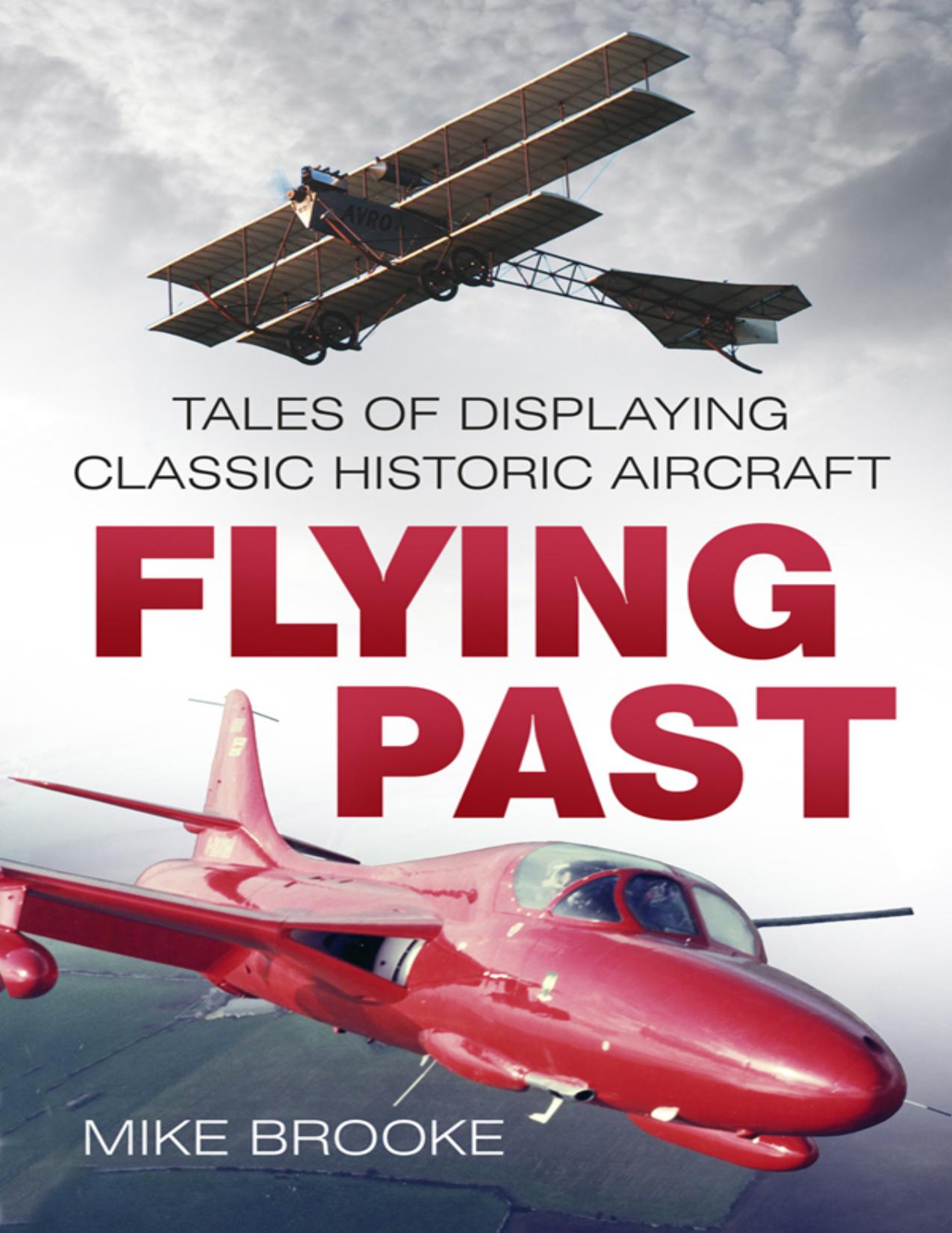Flying Past by Mike Brooke

Author:Mike Brooke
Language: eng
Format: epub, pdf
Publisher: The History Press
Bristol F.2b G-AEPH (D8096)
The Bristol Fighter first entered service with the RFC on the Western Front in March 1917. It was armed with a fixed, forward-firing, synchronised 0.303in Vickers machine gun and a Lewis gun mounted on a Scarff ring in the rear gunner/observer’s cockpit. The use of a gunner broke away from the single-seat fighters then in service, returning to the early days of air combat in the First World War with types such as the F.E.2b, F.E.8 and Vickers Gunbus. The difference was now that the gunner was seated behind the pilot and the Bristol Fighter had much better performance and manoeuvrability. After many modifications to the Bristol F.2 prototypes, the F.2a version started operations with a Rolls-Royce (RR) Falcon I, V-12, water-cooled engine giving 190hp. The initial service record of the F.2a – by now known to its crews as either the ‘Brisfit’ or the ‘Biff’ – was not good. But that was more the fault of the tactics dictated by HQs and frozen guns caused by the insistence of the engineers that they be liberally oiled. This practice, which came from Army field operations, did not work when the aircraft flew above the freezing level!
By now Bristol had developed the fighter further, incorporating the much more powerful 275hp RR Falcon III and reshaping the rear fuselage to allow the rear gunner more scope. The modified aircraft became the Bristol F.2b and more than 1,500 would be produced and in service by November 1918. The Brisfit was a favourite with its aircrew and won a deserved reputation as a rugged and effective fighter.
The Shuttleworth Bristol F.2b Fighter was built in 1918 and missed any action during the First World War. However, it did serve with No. 208 Squadron in Turkey during the 1920s; it still carries its original military registration of D8096. In 1936 it was bought as a surplus airframe by Captain C.P.B. Ogilvie with the aim of refurbishing it to flying condition and it was allocated the civil registration G-AEPH. However, nothing further happened until after the Second World War, when the F.2b was acquired by the Bristol Aircraft Company and fully restored. As it did with the Boxkite, it passed D8096 to the Collection, where it has been regularly flown and displayed since 1952. In the early 1980s the aircraft underwent a further refurbishment. The installed 275hp Rolls-Royce Falcon III is possibly the oldest RR engine still operating anywhere in the world.
After flying the S.E.5a, the first impression given by the F.2b is one of lumbering size. Its wingspan is half as much again and its length 25 per cent more than the S.E.5. The wing area of the two-seater is more than a third greater, so that initial impression is valid. Hence the expectation is that flying and displaying the F.2b will perhaps be a bit disappointing. But that may come later; first we have to climb aboard and get that big V-12 engine going. Having walked around to check all the wires and fabric, all that remains is to clamber up the side and get aboard.
Download
This site does not store any files on its server. We only index and link to content provided by other sites. Please contact the content providers to delete copyright contents if any and email us, we'll remove relevant links or contents immediately.
Waking Up in Heaven: A True Story of Brokenness, Heaven, and Life Again by McVea Crystal & Tresniowski Alex(37710)
Empire of the Sikhs by Patwant Singh(23015)
We're Going to Need More Wine by Gabrielle Union(18997)
Hans Sturm: A Soldier's Odyssey on the Eastern Front by Gordon Williamson(18526)
Leonardo da Vinci by Walter Isaacson(13227)
The Radium Girls by Kate Moore(11964)
Tools of Titans by Timothy Ferriss(8298)
Educated by Tara Westover(7991)
How to Be a Bawse: A Guide to Conquering Life by Lilly Singh(7426)
Permanent Record by Edward Snowden(5792)
The Last Black Unicorn by Tiffany Haddish(5598)
The Rise and Fall of Senator Joe McCarthy by James Cross Giblin(5244)
Promise Me, Dad by Joe Biden(5109)
The Wind in My Hair by Masih Alinejad(5055)
A Higher Loyalty: Truth, Lies, and Leadership by James Comey(4901)
The Crown by Robert Lacey(4757)
The Iron Duke by The Iron Duke(4317)
Joan of Arc by Mary Gordon(4049)
Stalin by Stephen Kotkin(3913)
